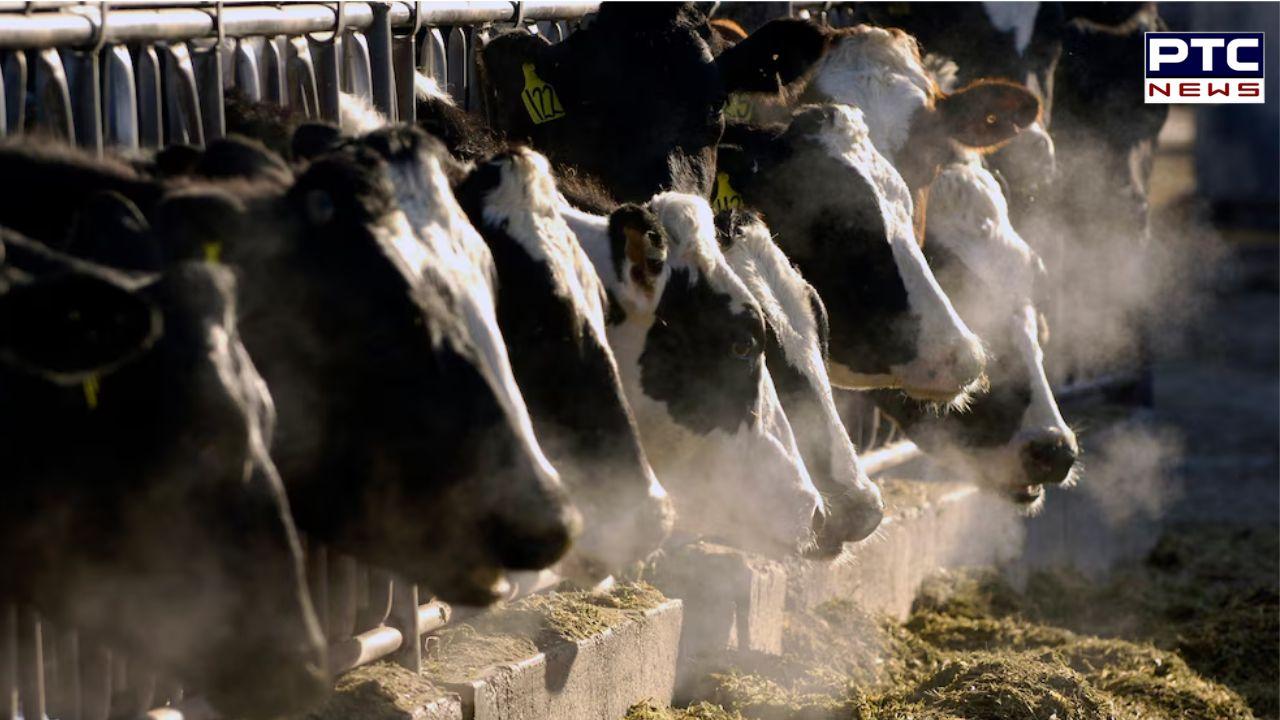

Bird flu detected in high concentrations in raw cow milk; WHO issues warning in US and India
PTC Web Desk: Health officials have flagged the presence of bird flu, scientifically known as H5N1, at significant concentrations in raw cow milk. The World Health Organization (WHO) has reported that this strain of avian influenza has made its way into raw cow milk in the US, prompting a strong recommendation for the consumption of pasteurised milk by health experts.
The concern over bird flu is not limited to the US; alerts have also been raised in India. An outbreak of this deadly disease in Kerala's Alappuzha district has authorities deeply concerned. Reports confirm that the disease has been detected in ducks after testing their samples.
Responding to the outbreak, the Animal Husbandry Department in Kerala has implemented crucial measures to control the virus's spread. These measures include upgrading laboratory networks, establishing diagnostic facilities, and introducing lateral flow kits for rapid field-level disease diagnosis, as per Times Now reports.
The process of pasteurisation, utilised to eliminate harmful bacteria, is widely available in supermarkets and is now strongly advised for milk consumption. Bird flu, or avian influenza, is a viral infection that can affect birds, humans and other animals, posing a substantial threat to birds and easily spreading to humans and other animals that come into contact with an infected carrier.

First identified in humans in 1997, H5N1 has a mortality rate of nearly 60%, as reported by the WHO. The virus has expanded its reach to infect other mammals, including humans, cats, bears, foxes, mink, and penguins. Cows have now been added to this list, according to recent reports from Times Now.
The authorities in the US are currently investigating infections in dairy herds, with cases under scrutiny across several states. Earlier this month, it was reported that a person working on a dairy farm in Texas was recovering from bird flu after being exposed to infected cattle.
Officials said these recent cases signified a concerning escalation of the virus's spread to mammals. Raw milk from infected cows had been found to have a very high concentration of the virus, prompting ongoing investigations into how long the virus could survive in milk.
Symptoms of the infection
Symptoms of an H5N1 infection resemble typical flu-like symptoms such as cough, diarrhea, respiratory difficulties, fever, headache, muscle aches, malaise, runny nose, and sore throat.
The transmission of the infection occurs through contact with infected bird feces, nasal secretions, or secretions from the mouth or eyes. While there are various types of bird flu, H5N1 was the first avian influenza virus to infect humans, with the initial case occurring in Hong Kong in 1997. The outbreak was linked to handling infected poultry.
H5N1 naturally occurs in wild waterfowl but can easily spread to domestic poultry, making it a threat to humans who come into contact with infected birds or their secretions. However, consuming properly cooked poultry or eggs from infected birds does not transmit bird flu, provided that eggs are thoroughly cooked and meat is cooked to an internal temperature of 165ºF.
In light of these developments, health officials and experts are urging caution and recommending the consumption of pasteurised milk as a preventive measure against the spread of bird flu.
- With inputs from agencies
